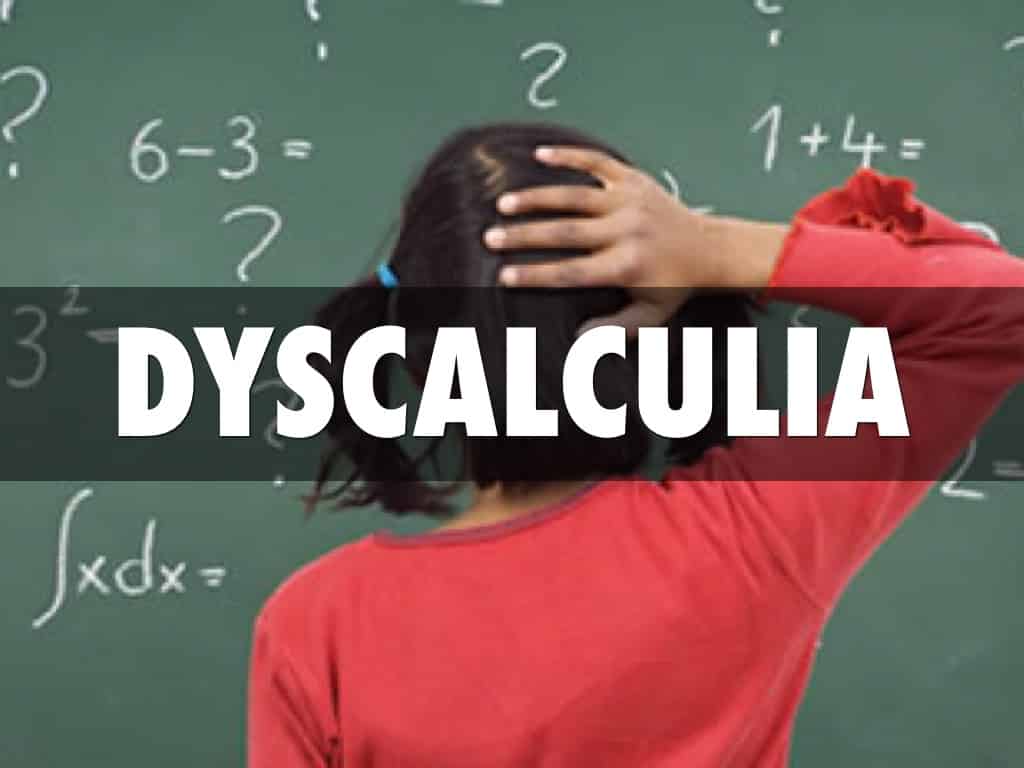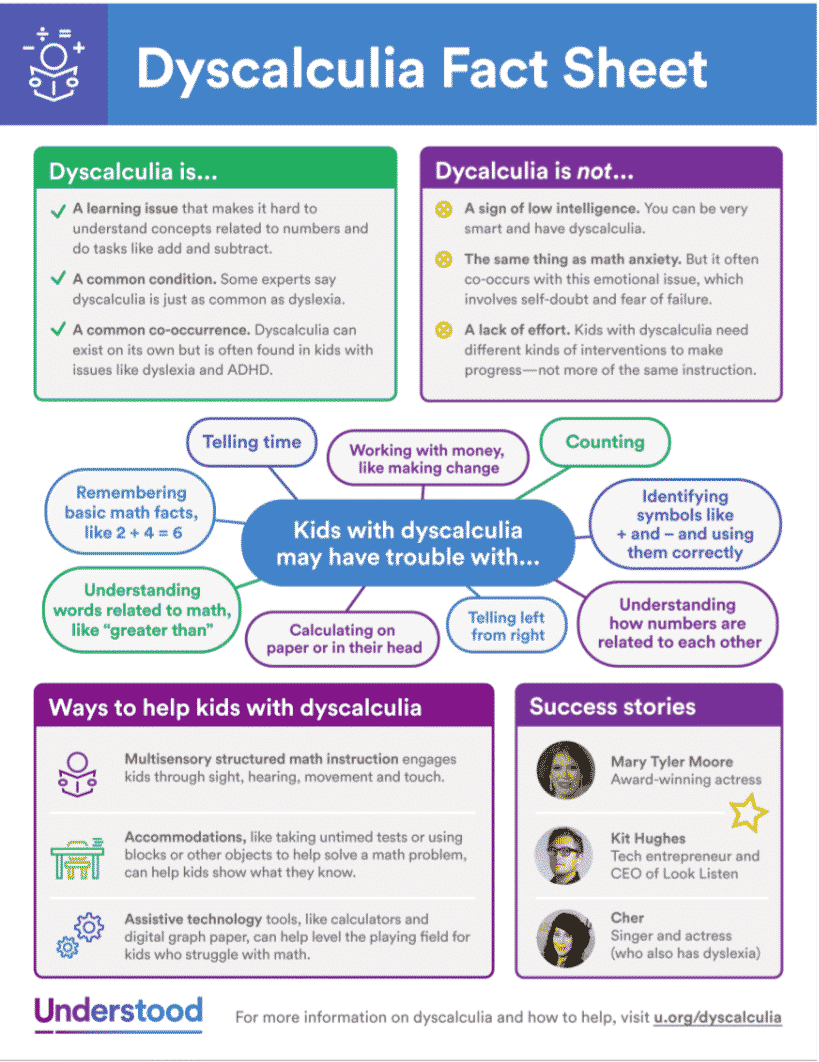
Have you ever tried asking your students what their favorite subject is? If so, how many of them answered “Math?”
“Math” might be a simple four-letter word but it evokes student’s different emotions ranging from dislike and anxiety to phobia. While a few of them love and enjoy Math, there are also some that suffer a learning disability.
Math skills are essential to our everyday lives. From checking on the clocks to telling a direction, we need to deal with numbers. However, some people experience “Triskaidekaphobia” or fear of the number 13 and others have the fear for number 666 or “Hexakosioihexekontahexaphobia.” Did you know that there are also people who have “Numerophobia” or “Arithmophobia” or the exaggerated, constant and often irrational fear of numbers? Many times the phobic might be able to work with numbers, but might experience deep anxiety while doing so.
Being an educator yourself, you witnessed some students having “math anxiety.” These are students who have strong skills in math but always question their abilities. Although it’s not a learning issue, it can certainly get in the way of learning math. Or perhaps you have a student suffering from “dyscalculia.” This learning issue makes it hard to make sense of numbers and math concepts.
(You can find here the difference between Math Anxiety and Dyscalculia: Math Anxiety vs. Dyscalculia: Comparing the Signs by understood.org)
Dyscalculia affects up to 7% of all students. According to IDEA, “DYSCALCULIA” is categorized under specific learning disability. Dyscalculia is defined as a failure to achieve in mathematics commensurate with chronological age, normal intelligence, and adequate instruction. It is marked by difficulties with visualization; visual-spatial perception, processing and discrimination; counting; pattern recognition; sequential memory; working-memory for numbers; retrieval of learned facts and procedures; directional confusion; quantitative processing speed; kinesthetic sequences; and perception of time.
SIGNS AND SYMPTOMS
- Shows difficulty understanding concepts of place value, and quantity, number lines, positive and negative value, carrying and borrowing
- Has difficulty understanding and doing word problems
- Has difficulty sequencing information or events
- Exhibits difficulty using steps involved in math operations
- Shows difficulty understanding fractions
- Is challenged making change and handling money
- Displays difficulty recognizing patterns when adding, subtracting, multiplying, or dividing
- Has difficulty putting language to math processes
- Has difficulty understanding concepts related to time such as days, weeks, months, seasons, quarters, etc.
- Exhibits difficulty organizing problems on the page, keeping numbers lined up, following through on long division problems
(References: Dyscalculia by dyscalculia.org , Specific Learning Disability by specialeducationguide.com , Dyscalculia by learningdisabilitiesofamerica.org)
SIGNS OF DYSCALCULIA AT DIFFERENT AGES
Signs of Dyscalculia in Preschool
- Has trouble learning to count and skips over numbers long after kids the same age can remember numbers in the right order.
- Doesn’t seem to understand the meaning of counting. For example, when you ask for five blocks, he just hands you a large group of blocks, rather than counting them out.
- Struggles to recognize patterns, like smallest to largest or tallest to shortest.
- Has trouble understanding number symbols, like making the connection between “7” and the word seven.
- Struggles to connect a number to an object, such as knowing that “3” applies to groups of things like 3 cookies, 3 cars, or 3 kids.
Signs of Dyscalculia in Grade School
- Has difficulty learning and recalling basic math facts, such as 2 + 4 = 6.
- Still uses fingers to count instead of using more advanced strategies (like mental math).
- Struggles to identify math signs like + and ‒ and to use them correctly.
- Has a tough time understanding math phrases, like greater than and less than.
- Has trouble with place value, often putting numbers in the wrong column.
Signs of Dyscalculia in Middle School
- Struggles with math concepts like commutativity (3 + 5 is the same as 5 + 3) and inversion (being able to solve 3 + 26 ‒ 26 without calculating).
- Has a tough time understanding math language and coming up with a plan to solve a math problem.
- Has trouble keeping score in sports games and gym activities.
- Has difficulty figuring out the total cost of things and often runs out of money on his lunch account.
- May avoid situations that require understanding numbers, like playing games that involve math.
Signs of Dyscalculia in High School
- Struggles to understand information on charts and graphs.
- Has trouble applying math concepts to money, such as making exact change and figuring out a tip.
- Has trouble measuring things like ingredients in a simple recipe or liquids in a bottle.
- Lacks confidence in activities that require understanding speed, distance and directions, and may get lost easily.
- Has trouble finding different approaches to the same math problem, such as adding the length and width of a rectangle and doubling the answer to solve for the perimeter (rather than adding all the sides).
(Access full article here: Signs of Dyscalculia at Different Ages by understood.org)
So how do we help students with dyscalculia?
CLASSROOM ACCOMMODATION
For In-class Learning
- Review what the student already learned before teaching new skills.
- Let the student talk about how to solve problems.
- Let the student write out charts or draw sketches to solve problems.
- Use graph paper to help line up numbers and problems.
- Give the students a list of the math formulas taught in the class.
- Use manipulatives such as coins, blocks, and puzzles.
For Homework
- Create separate worksheets for word problems and number problems.
- Highlight or circle key words and numbers on word problems.
For Classwork and Taking Tests
- Allow extra time on tests.
- Use a chart of math facts or multiplication tables.
- Let the student use a calculator when he’s not being tested in computation.
- Give more space to write problems and solutions.
- Break down worksheets into sections.
- Use objects such as blocks or base ten sticks to teach math ideas.
- Check often to see if the student understands the work.
(Reference: At a Glance: Classroom Accommodations for Dyscalculia by understood.org)
USEFUL STRATEGIES IN TEACHING STUDENTS WITH DYSCALCULIA
- Avoid memory overload. Assign manageable amounts of work as skills are learned.
- Build retention by providing review within a day or two of the initial learning of difficult skills.
- Provide supervised practice to prevent students from practicing misconceptions and “misrules.”
- Make new learning meaningful by relating practice of subskills to the performance of the whole task.
- Reduce processing demands by preteaching component skills of algorithms and strategies.
- Help students to visualize math problems by drawing.
- Use visual and auditory examples.
- Use real-life situations that make problems functional and applicable to everyday life.
- Do math problems on graph paper to keep the numbers in line.
- Use uncluttered worksheets to avoid too much visual information.
- Practice with age-appropriate games as motivational materials.
- Have students track their progress.
- Challenge critical thinking about real problems with problem solving.
- Use manipulatives and technology such as tape recorders or calculators.
(Source: Washington.edu)
- OTHER HELPFUL SOURCES IN TEACHING STUDENTS WITH DYSCALCULIA
- Strategies for Learning and Teaching by Special Education Support Service (sess.ie)
- Teaching Strategies by Learning Disabilities Association of America (ldaamerica.org)
- Dyscalculia Worksheets and Other Resources by helpinwithmath.com
- Dyscalculia Games, Videos & Teaching Resources by com
Are you a parent and somehow suspecting your child is suffering from dyscalculia?
Read these 9-Steps you can take to see if your child has dyscalculia: I’m Concerned My Child Might Have Dyscalculia. Now What? Published by understood.org.
And maybe you can relate and get an inspiration to this story of a parent raising a child with dyscalculia: 8 Things I Wish People Knew About Parenting a Child With Dyscalculia.
We are not affiliated with any of organizations mentioned in this article. But we admire their passion and dedication in helping parents and educators teach students with dyscalculia. We believe that it always takes a village to succeed in making each student with specific learning disability’s own world a better place to live. Math may not be their favorite subject, but just maybe YOU can be their favorite person in the world for changing their lives in a better state.




